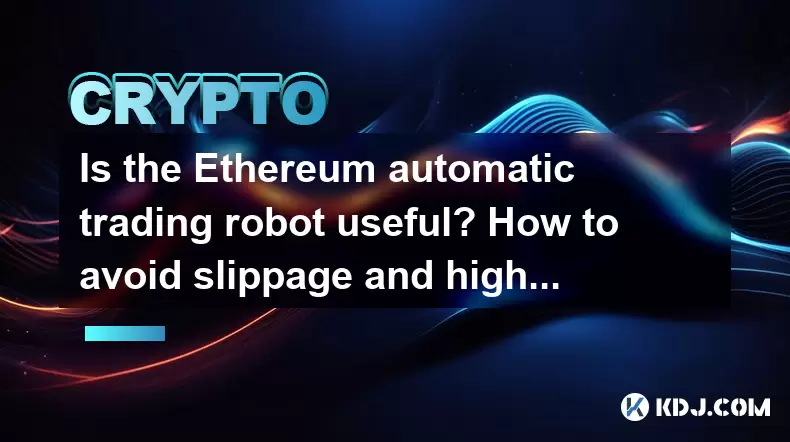-
 Bitcoin
Bitcoin $119600
0.45% -
 Ethereum
Ethereum $4671
8.16% -
 XRP
XRP $3.250
2.78% -
 Tether USDt
Tether USDt $0.9999
0.01% -
 BNB
BNB $838.0
3.17% -
 Solana
Solana $198.5
12.77% -
 USDC
USDC $0.9997
-0.01% -
 Dogecoin
Dogecoin $0.2396
6.18% -
 TRON
TRON $0.3547
2.21% -
 Cardano
Cardano $0.8583
9.20% -
 Chainlink
Chainlink $24.42
13.29% -
 Hyperliquid
Hyperliquid $44.08
1.42% -
 Stellar
Stellar $0.4492
2.37% -
 Sui
Sui $3.915
6.09% -
 Bitcoin Cash
Bitcoin Cash $612.9
3.02% -
 Hedera
Hedera $0.2627
5.34% -
 Ethena USDe
Ethena USDe $1.000
-0.03% -
 Avalanche
Avalanche $24.94
7.83% -
 Litecoin
Litecoin $132.6
10.48% -
 Toncoin
Toncoin $3.439
1.39% -
 UNUS SED LEO
UNUS SED LEO $9.212
2.34% -
 Shiba Inu
Shiba Inu $0.00001371
4.89% -
 Uniswap
Uniswap $11.54
1.13% -
 Polkadot
Polkadot $4.211
7.67% -
 Dai
Dai $0.9998
-0.03% -
 Cronos
Cronos $0.1649
-1.62% -
 Ethena
Ethena $0.7975
-1.46% -
 Pepe
Pepe $0.00001235
9.15% -
 Bitget Token
Bitget Token $4.445
0.46% -
 Aave
Aave $323.7
8.18%
Is the Ethereum automatic trading robot useful? How to avoid slippage and high fees?
Ethereum trading bots can increase efficiency and remove emotional trading, but traders must manage slippage and fees to maximize effectiveness.
May 19, 2025 at 06:08 pm

The use of an Ethereum automatic trading robot has become increasingly popular among cryptocurrency traders looking to capitalize on the volatile nature of the market. These robots, also known as trading bots, are designed to execute trades based on pre-set criteria and algorithms, potentially increasing efficiency and reducing the emotional impact of trading decisions. However, the effectiveness of these bots can vary, and it's crucial for traders to understand their functionality and limitations.
Understanding Ethereum Automatic Trading Robots
An Ethereum automatic trading robot operates by analyzing market data and executing trades according to the parameters set by the user. These parameters can include price thresholds, volume indicators, and various technical analysis signals. The primary advantage of using such a robot is the ability to trade 24/7 without the need for constant human supervision. This can be particularly beneficial in the cryptocurrency market, which operates around the clock.
Benefits of Using an Ethereum Trading Bot
One of the key benefits of using an Ethereum trading bot is the potential for increased efficiency. Bots can process vast amounts of data and execute trades much faster than a human trader. This speed can be crucial in a market where prices can change rapidly. Additionally, trading bots can help remove emotional decision-making from the trading process, which can lead to more disciplined and consistent trading strategies.
Challenges and Limitations
Despite their advantages, Ethereum trading bots are not without their challenges. One significant issue is the potential for slippage, which occurs when there is a difference between the expected price of a trade and the price at which the trade is actually executed. Slippage can significantly impact the profitability of trades, especially in highly volatile markets. Additionally, trading bots can incur high fees, particularly if they are executing a large number of trades.
How to Avoid Slippage
To minimize the impact of slippage, traders can take several steps when using an Ethereum trading bot:
- Set realistic price thresholds: By setting more conservative price thresholds, traders can reduce the likelihood of slippage occurring during rapid market movements.
- Use limit orders: Instead of using market orders, which can be more susceptible to slippage, traders can use limit orders to specify the maximum price they are willing to pay or the minimum price they are willing to accept.
- Monitor market volatility: Keeping an eye on market volatility can help traders adjust their bot's settings to better handle periods of high volatility.
Strategies to Minimize High Fees
High fees can eat into the profits generated by an Ethereum trading bot. To minimize these fees, traders can consider the following strategies:
- Choose a bot with low transaction fees: Some trading bots charge lower fees than others, so it's important to compare different options before selecting a bot.
- Optimize trade frequency: Reducing the number of trades executed by the bot can help lower overall fees. This can be achieved by adjusting the bot's settings to be more selective about when it executes trades.
- Select a platform with competitive fees: The choice of trading platform can also impact the fees incurred. Platforms with lower trading fees can help reduce the overall cost of using a trading bot.
Selecting the Right Ethereum Trading Bot
Choosing the right Ethereum trading bot is crucial for maximizing its effectiveness. Traders should consider factors such as the bot's performance history, user reviews, and the level of customization available. A bot that offers a high degree of customization can be tailored to fit a trader's specific strategy and risk tolerance. Additionally, it's important to ensure that the bot is compatible with the trader's chosen trading platform.
Monitoring and Adjusting the Bot's Performance
Once an Ethereum trading bot is set up, it's essential to monitor its performance regularly. Traders should review the bot's trading history and adjust its settings as needed to optimize performance. This may involve tweaking the bot's parameters, such as price thresholds or technical indicators, to better align with current market conditions. Regular monitoring can also help identify any issues with the bot's performance, such as unexpected slippage or high fees, allowing traders to take corrective action.
Frequently Asked Questions
Can an Ethereum trading bot guarantee profits?
No, an Ethereum trading bot cannot guarantee profits. While these bots can help execute trades more efficiently and remove emotional decision-making, they are still subject to market risks and volatility. Traders should use trading bots as part of a broader trading strategy and not rely solely on them for profits.
How often should I adjust the settings of my Ethereum trading bot?
The frequency of adjusting the settings of an Ethereum trading bot can vary depending on market conditions and the trader's strategy. As a general rule, traders should review and adjust their bot's settings at least weekly to ensure they remain aligned with current market trends and the trader's goals.
Are there any risks associated with using an Ethereum trading bot?
Yes, there are several risks associated with using an Ethereum trading bot. These include the potential for technical failures, security breaches, and the risk of the bot executing trades that result in losses. Traders should thoroughly research and understand these risks before using a trading bot.
Can I use multiple Ethereum trading bots simultaneously?
Yes, it is possible to use multiple Ethereum trading bots simultaneously. However, traders should be cautious about overcomplicating their trading strategy and ensure that the bots are not conflicting with each other. It's important to monitor the performance of each bot and adjust their settings as needed to maintain a cohesive trading strategy.
Disclaimer:info@kdj.com
The information provided is not trading advice. kdj.com does not assume any responsibility for any investments made based on the information provided in this article. Cryptocurrencies are highly volatile and it is highly recommended that you invest with caution after thorough research!
If you believe that the content used on this website infringes your copyright, please contact us immediately (info@kdj.com) and we will delete it promptly.
- Meme Coins: Chasing the 2025 Surge – Which Will Moonshot?
- 2025-08-13 10:25:23
- Bitcoin's Wild Ride: Rally, Pullback, and What's Next
- 2025-08-13 10:25:23
- Bitcoin, Bitmax, and Institutional Demand: A New Era of Crypto Investment
- 2025-08-13 10:45:12
- Solana, ROAM, and Airdrops: What's the Buzz in 2025?
- 2025-08-13 11:35:13
- Riding the Crypto Wave: NFTs, DeFi, and the Market's $4.2T High
- 2025-08-13 11:35:13
- Cold Wallet: Cashback, Crypto, and Cutting Gas Fees Like a Boss
- 2025-08-13 11:45:17
Related knowledge

How to purchase Aragon (ANT)?
Aug 09,2025 at 11:56pm
Understanding Aragon (ANT) and Its PurposeAragon (ANT) is a decentralized governance token that powers the Aragon Network, a platform built on the Eth...

Where to trade Band Protocol (BAND)?
Aug 10,2025 at 11:36pm
Understanding the Role of Private Keys in Cryptocurrency WalletsIn the world of cryptocurrency, a private key is one of the most critical components o...

What is the most secure way to buy Ocean Protocol (OCEAN)?
Aug 10,2025 at 01:01pm
Understanding Ocean Protocol (OCEAN) and Its EcosystemOcean Protocol (OCEAN) is a decentralized data exchange platform built on blockchain technology,...

How to invest in Kyber Network Crystal v2 (KNC)?
Aug 12,2025 at 05:21pm
Understanding Kyber Network Crystal v2 (KNC)Kyber Network is a decentralized liquidity hub built on the Ethereum blockchain that enables instant token...

Where can I buy UMA (UMA)?
Aug 07,2025 at 06:42pm
Understanding UMA and Its Role in Decentralized FinanceUMA (Universal Market Access) is an Ethereum-based decentralized finance (DeFi) protocol design...

How to sell my Ren (REN) tokens?
Aug 13,2025 at 11:35am
Understanding REN Tokens and Their Role in Decentralized FinanceREN is an ERC-20 token that powers the Ren protocol, a decentralized interoperability ...

How to purchase Aragon (ANT)?
Aug 09,2025 at 11:56pm
Understanding Aragon (ANT) and Its PurposeAragon (ANT) is a decentralized governance token that powers the Aragon Network, a platform built on the Eth...

Where to trade Band Protocol (BAND)?
Aug 10,2025 at 11:36pm
Understanding the Role of Private Keys in Cryptocurrency WalletsIn the world of cryptocurrency, a private key is one of the most critical components o...

What is the most secure way to buy Ocean Protocol (OCEAN)?
Aug 10,2025 at 01:01pm
Understanding Ocean Protocol (OCEAN) and Its EcosystemOcean Protocol (OCEAN) is a decentralized data exchange platform built on blockchain technology,...

How to invest in Kyber Network Crystal v2 (KNC)?
Aug 12,2025 at 05:21pm
Understanding Kyber Network Crystal v2 (KNC)Kyber Network is a decentralized liquidity hub built on the Ethereum blockchain that enables instant token...

Where can I buy UMA (UMA)?
Aug 07,2025 at 06:42pm
Understanding UMA and Its Role in Decentralized FinanceUMA (Universal Market Access) is an Ethereum-based decentralized finance (DeFi) protocol design...

How to sell my Ren (REN) tokens?
Aug 13,2025 at 11:35am
Understanding REN Tokens and Their Role in Decentralized FinanceREN is an ERC-20 token that powers the Ren protocol, a decentralized interoperability ...
See all articles

























































































